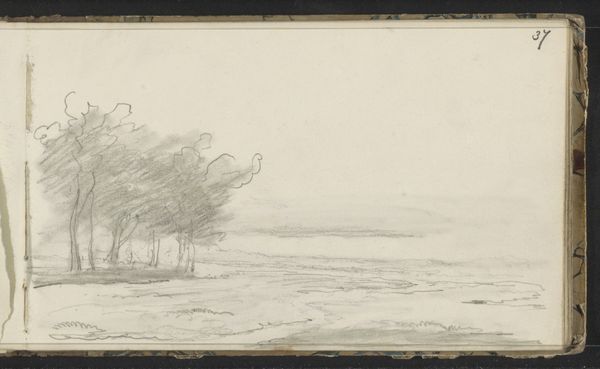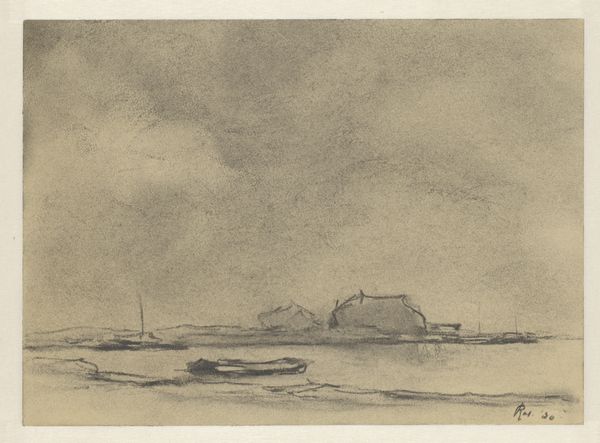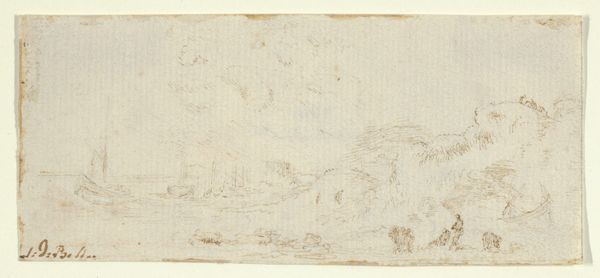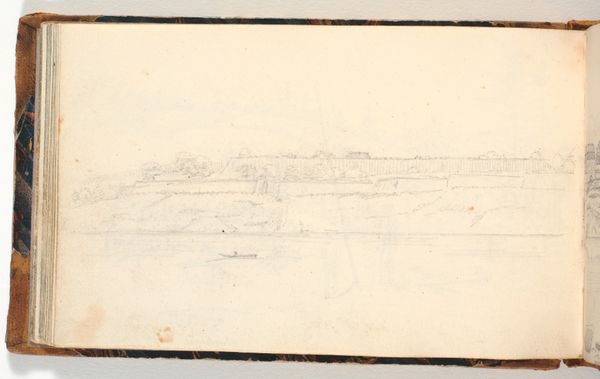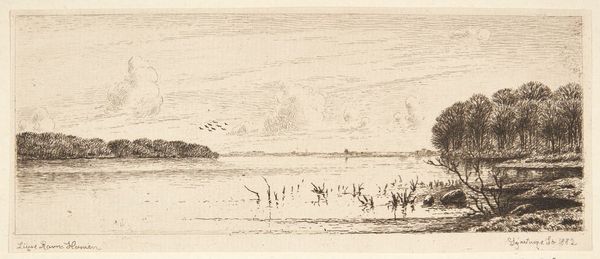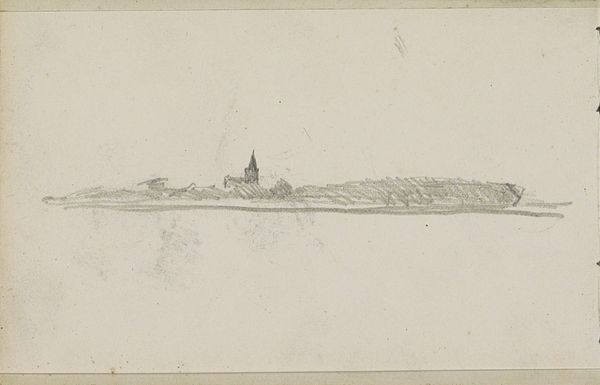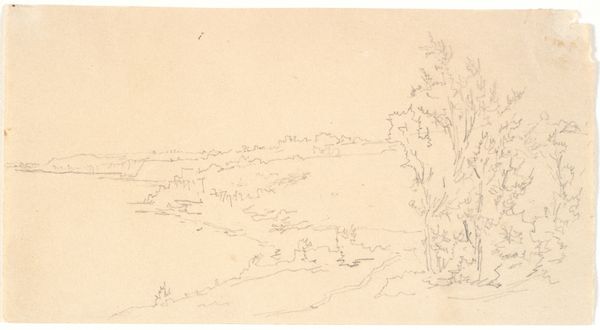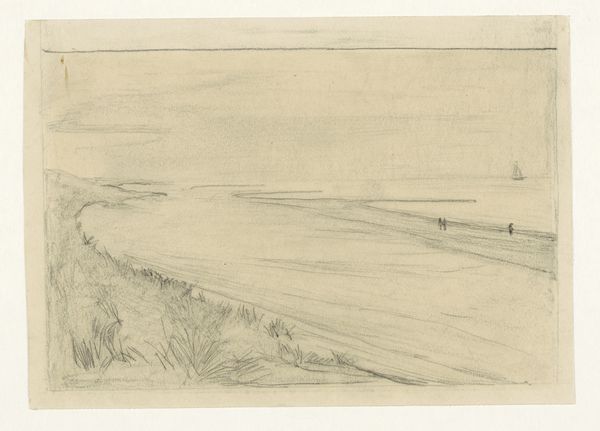
drawing, pencil, architecture
#
drawing
#
16_19th-century
#
landscape
#
romanticism
#
pencil
#
architecture
Copyright: Public Domain
Curator: Here we have “Flat Landscape with River and House,” a pencil drawing by Ernst Fries. What's your first impression? Editor: It feels…distant. There's a delicate sort of loneliness in the way the building sits in the open landscape. Like a tiny memory on a vast shore. Curator: Yes! And the sketch-like quality reinforces that sense of impermanence, don't you think? Look how Fries uses delicate lines to create this scene. The flat land dominates, but our eyes are drawn to the architectural structure by the water. Editor: Precisely. The house could be seen as a symbol for human endurance. Throughout history, architecture always stands in as a visual signifier, even a record of our triumphs and struggles, like a stone record keeper. The way it reflects in the water...beautiful. Curator: You are right; there is a lot to contemplate here. Also, the romantic undertones present a world beyond ourselves, a world for reflection. The Romantic era artists were drawn to nature to elicit strong emotional responses. I can also see subtle marks showing the path in life, or how to progress. Editor: True, you can see nature’s sublimity in every stroke, as if mirroring our emotions to discover where we are coming from. The landscape becomes an external representation of the inner self. Curator: Ultimately, this landscape serves as a poignant meditation. What began as an attempt to capture the real may very well become a psychological portrait. Editor: I think that's right. We are so lucky to discover it here today. Curator: Yes, a beautiful piece to remind us of our intimate relationship to the earth, to our dreams, and to those small but resonant symbols we create and leave behind.
Comments
No comments
Be the first to comment and join the conversation on the ultimate creative platform.
